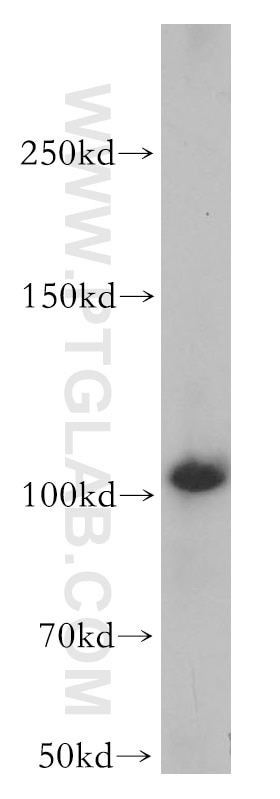- Featured Product
- KD/KO Validated
MAPK6 Polyklonaler Antikörper
MAPK6 Polyklonal Antikörper für WB, ELISA
Wirt / Isotyp
Kaninchen / IgG
Getestete Reaktivität
human, Maus, Ratte
Anwendung
WB, IF, IHC, ELISA
Konjugation
Unkonjugiert
Kat-Nr. : 12839-1-AP
Synonyme
Geprüfte Anwendungen
| Erfolgreiche Detektion in WB | A431-Zellen |
Empfohlene Verdünnung
| Anwendung | Verdünnung |
|---|---|
| Western Blot (WB) | WB : 1:500-1:1000 |
| It is recommended that this reagent should be titrated in each testing system to obtain optimal results. | |
| Sample-dependent, check data in validation data gallery | |
Veröffentlichte Anwendungen
| KD/KO | See 2 publications below |
| WB | See 3 publications below |
| IHC | See 1 publications below |
| IF | See 2 publications below |
Produktinformation
12839-1-AP bindet in WB, IF, IHC, ELISA MAPK6 und zeigt Reaktivität mit human, Maus, Ratten
| Getestete Reaktivität | human, Maus, Ratte |
| In Publikationen genannte Reaktivität | human, Ratte |
| Wirt / Isotyp | Kaninchen / IgG |
| Klonalität | Polyklonal |
| Typ | Antikörper |
| Immunogen | MAPK6 fusion protein Ag3577 |
| Vollständiger Name | mitogen-activated protein kinase 6 |
| Berechnetes Molekulargewicht | 83 kDa |
| Beobachtetes Molekulargewicht | 100-105 kDa |
| GenBank-Zugangsnummer | BC035492 |
| Gene symbol | MAPK6 |
| Gene ID (NCBI) | 5597 |
| Konjugation | Unkonjugiert |
| Form | Liquid |
| Reinigungsmethode | Antigen-Affinitätsreinigung |
| Lagerungspuffer | PBS with 0.02% sodium azide and 50% glycerol |
| Lagerungsbedingungen | Bei -20°C lagern. Nach dem Versand ein Jahr lang stabil Aliquotieren ist bei -20oC Lagerung nicht notwendig. 20ul Größen enthalten 0,1% BSA. |
Publikationen
| Species | Application | Title |
|---|---|---|
Sci Rep MicroRNA-26a targets MAPK6 to inhibit smooth muscle cell proliferation and vein graft neointimal hyperplasia.
| ||
J Exp Clin Cancer Res LncMAPK6 drives MAPK6 expression and liver TIC self-renewal.
| ||
Exp Ther Med miR-98 inhibits cell proliferation and induces cell apoptosis by targeting MAPK6 in HUVECs. |


